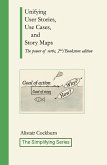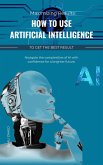This book opens with a dozen examples ranging from simple to complex, low-level to "kite"-level. By page 38, you've finished the core explanations and are already slicing, refining, and applying the 7 key concepts to improve your writing. It's fast, focused, and designed to get readers productive immediately.
A concise, practical introduction to use cases, from the author of the classic.
Use cases are one of the most effective tools for understanding system behavior and aligning stakeholders, but their reputation for complexity often scares teams away. This book reverses that. It's a portable, example-driven guide for quickly learning the essentials of use case thinking, writing, and applying, whether in business analysis, system design, or development.
Structured in four parts, the book begins by showing complete examples, then introduces the theory, the incremental development method, and the eight writing techniques that dramatically improve clarity and precision. It includes:
- A dozen annotated use case examples
- Detailed explanation of the structure of use cases
- Guidance for slicing and agile delivery
- Techniques for better phrasing, perspective, and completeness
Who it's for:
- Teams and individuals new to use cases who want to skip the jargon and get results quickly
- Agile coaches, product owners, and developers seeking structure beyond user stories
- Instructors and mentors needing a short, clear introduction to the technique
- Anyone who finds full-length texts overwhelming and wants a launchpad
How it's used in practice:
This mini-book can be used:
- As an onboarding tool for agile or requirements teams
- As a reference for slicing work into deliverable increments
- As teaching material in university or corporate training settings
- As a field guide for refining backlog items and planning from real user interactions
What's new or different:
This book is not a summary, it's a redesigned experience. Unlike Writing Effective Use Cases (Cockburn, 2000), this book opens with examples and minimizes theory. Unlike Unifying User Stories, Use Cases, Story Maps (Cockburn, 2024), it focuses on what someone needs to begin writing and using use cases in modern agile settings. Crucially, it introduces slicing for incremental delivery, a technique not present in earlier books.
Written by Dr. Alistair Cockburn, a world-renowned expert on software development. this book brings his decades of experience to this sharp and readable text.
Dieser Download kann aus rechtlichen Gründen nur mit Rechnungsadresse in A, B, CY, CZ, D, DK, EW, E, FIN, F, GR, H, IRL, I, LT, L, LR, M, NL, PL, P, R, S, SLO, SK ausgeliefert werden.









